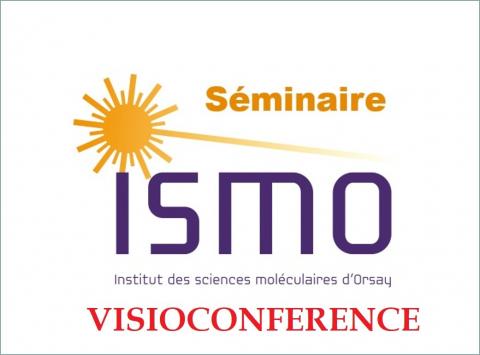
Radio-frequency signals from single molecules, EN VISIOCONFERENCE
Radio-frequency signals from single molecules
Stefan Muellegger
Institute of Semiconductor and Solid State Physics, Johannes Kepler University Linz
Modern nanoscience approaches the atomic scale : Individual atoms and molecules – rather than ensembles – carry the functionalities of man-made devices such as switching, storing, calculating or catalyzing. While single-atom and single-molecule imaging has become routine since the advent of the scanning tunneling microscope (STM), their chemical identification by STM remains a challenge. Recent advances of local electrical conductance spectroscopy utilizing low-temperature STM combined with radio-frequency modulation of the tunneling voltage promise to turn the STM into an identification tool with sub-molecular spatial resolution.
Our method, denoted as radio frequency scanning tunneling spectroscopy (RFSTS), is based on a spectroscopic STM system operating at frequencies of presently 0.1 to 32 GHz. It combines the excellent spatial resolution of STM (typically < 1 nm) with the exceptional energy resolution of microwave resonance techniques (typically < 1 µeV). Typical operating conditions include single-crystal substrates, ultra-high vacuum and a sample temperature of about 8 K.
After introducing the experimental setup, I report on the resonant detection of mechanical as well as spin degrees of freedom in individual surface-adsorbed molecules that are individually selectable by the probe tip. The simultaneous measurement of electric tunnel conductance as a function of modulation frequency reveals resonance peaks at characteristic frequency values, which are closely related to the characteristic excitation energies of the selected single quantum object (atom or molecule). I will give a review on the latest RFSTS results of detecting individual spin- and mechanical excitations of single molecules. I will end my presentation, discussing future directions of RFSTS for chemical identification at the single-molecule level.
Site de l'ISMO pour disposer du lien :
http://www.ismo.universite-paris-saclay.fr/spip.php?article2417
Radio-frequency signals from single molecules
Stefan Muellegger
Institute of Semiconductor and Solid State Physics, Johannes Kepler University Linz
Modern nanoscience approaches the atomic scale : Individual atoms and molecules – rather than ensembles – carry the functionalities of man-made devices such as switching, storing, calculating or catalyzing. While single-atom and single-molecule imaging has become routine since the advent of the scanning tunneling microscope (STM), their chemical identification by STM remains a challenge. Recent advances of local electrical conductance spectroscopy utilizing low-temperature STM combined with radio-frequency modulation of the tunneling voltage promise to turn the STM into an identification tool with sub-molecular spatial resolution.
Our method, denoted as radio frequency scanning tunneling spectroscopy (RFSTS), is based on a spectroscopic STM system operating at frequencies of presently 0.1 to 32 GHz. It combines the excellent spatial resolution of STM (typically < 1 nm) with the exceptional energy resolution of microwave resonance techniques (typically < 1 µeV). Typical operating conditions include single-crystal substrates, ultra-high vacuum and a sample temperature of about 8 K.
After introducing the experimental setup, I report on the resonant detection of mechanical as well as spin degrees of freedom in individual surface-adsorbed molecules that are individually selectable by the probe tip. The simultaneous measurement of electric tunnel conductance as a function of modulation frequency reveals resonance peaks at characteristic frequency values, which are closely related to the characteristic excitation energies of the selected single quantum object (atom or molecule). I will give a review on the latest RFSTS results of detecting individual spin- and mechanical excitations of single molecules. I will end my presentation, discussing future directions of RFSTS for chemical identification at the single-molecule level.
Site de l'ISMO pour disposer du lien :
http://www.ismo.universite-paris-saclay.fr/spip.php?article2417
